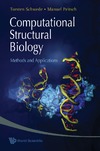Computational structural biology has made tremendous progress over the last two decades, and this book provides a recent and broad overview of such computational methods in structural biology. It covers the impact of computational structural biology on protein structure prediction methods, macromolecular function and protein design, and key methods in drug discovery. It also addresses the computational challenges of experimental approaches in structural biology. In addition to reviewing the current state of computational structural biology, each chapter ends with a brief, visionary discussion on the future outlook, whereby the main challenges for the coming years are elucidated. Written by an international panel of expert contributors, this book can serve as a reference manual for students and practitioners alike.
Contents: Structure Prediction and Assessment Methods: Protein Fold Recognition and Threading (L J McGuffin); Assessment of Protein Structure Predictions (E Capriotti & M A Marti-Renom); From Structure to Function to Design: Evolution of Protein Folds (A N Lupas & K K Koretke); Atomistic Simulations of Reactions and Transition States (M Meuwly); Protein Protein Interactions and Aggregation Processes (R I Dima); Drug Discovery and Pharmacology: MD-Based Free Energy Simulations (M A Cuendet et al.); Structure-Based Computational Approaches to Drug Metabolism (M A Lill); New Frontiers in Experimental Methods: New Frontiers in X-ray Crystallography (C U Stirnimann & M G Gr?????‚??tter); New Frontiers in Characterizing Structure and Dynamics by NMR (M Nilges et al.); Selected Topics: Docking for Neglected Diseases as Community Efforts (M Podvinec et al.); Protein Structure Databases (M John et al.); Molecular Graphics in Structural Biology (A M Lesk et al.); and other chapters.
 |
|
О проекте
|
|
О проекте


